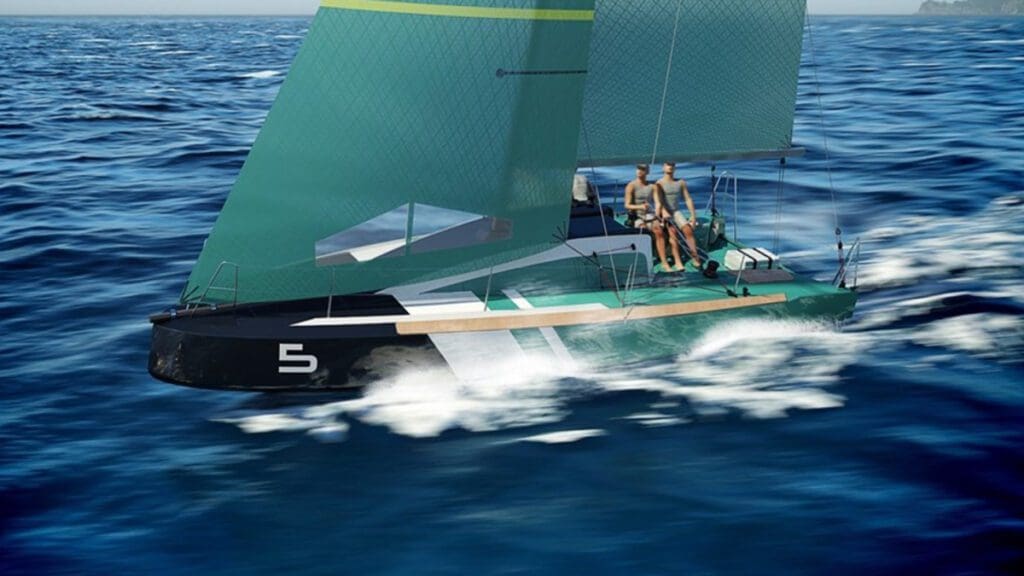With the preliminary design study phase drawing to a close, the ground is now being prepared for the construction of the first Class 30, with the next phase of the project underway, which is the development of the detailed construction plans. These will be completed by the end of March 2022.
The new Class 30 design will offer two different specifications; a Club and One Design version, with the Club offering being seen as a tool for training, learning about, and competing on the offshore racing circuit. This new boat is the fruits of an international architecture competition organized by France’s National Offshore Racing Union (UNCL) in partnership with the Royal Ocean Racing Club (RORC), in the UK and the Storm Trysail Club in America. With the constant involvement of the competition winners, the VPLP naval architecture firm and the Multiplast yard.
One of the objectives of the project is for the Class 30 Club boat, to have a competitive ready to sail price tag of under €100,000.
Production set to commence from January 2023
With regards to the build schedule, the study phase has been extended to finalize the tooling and moulds so that construction of the production boats can commence at the beginning of 2023, with the aim of having a few of the boats competing that Easter, either at the Spi Ouest France or the SNIM or at RORC races in the UK.
Depending on how the order book evolves, promoters of the production boat will consider in due course whether or not to put in place an additional mould to increase production capacity in France, whilst evaluating the development of a license program overseas.
A boat designed to be container-shipped
In addition to the very contemporary lines and a series of simple and inexpensive solutions, what has come off the drawing board of competition winner VPLP-Multiplast is a truly stellar logistical feat. Indeed, through the possibility of fitting the whole boat and its rig into a 40-foot container was not a prerequisite of the initial specifications, it was quickly viewed as a major benefit in ensuring the best possible distribution of the one-design via both road and sea transport.
The design of a transport cradle is also envisaged with this in mind. In line with the wishes of the project’s stakeholders, particular attention has gone into the pre-manufacture studies of the first prototype to ensure the best possible control of the budget for the production boats, which is a key aspect of the project.
“Managing to combine performance, simplicity and fun with this boat, which aims to connect dinghy sailing and offshore racing, is an extremely motivating challenge for our whole team. Following on from our fine experience on the Figaro 3, it’s another step forward into the world of production monohulls for us.”
Simon Watin, VPLP design
A circuit for the Class 30 One Design
The main aim of the class is to set up a sports program enabling sailors – owners and clubs – to get out racing at the highest level as soon as possible on a variety of course types and stretches of water. To this end, the one-design is intended to provide an optimized response to the IRC measurement criteria.
This option will pave the way for an extensive one-design race program both in France, the UK, and overseas, around the cans and offshore. UNCL and RORC are also very keen to quickly schedule a ‘Class 30 Tour’, an event which will serve as a reminder of the project’s suitability and ambition for training and replenishing a whole generation of offshore racing crew and skippers of renown. This Class 30 Tour could travel with crews going back and forth between the English and French coasts.
